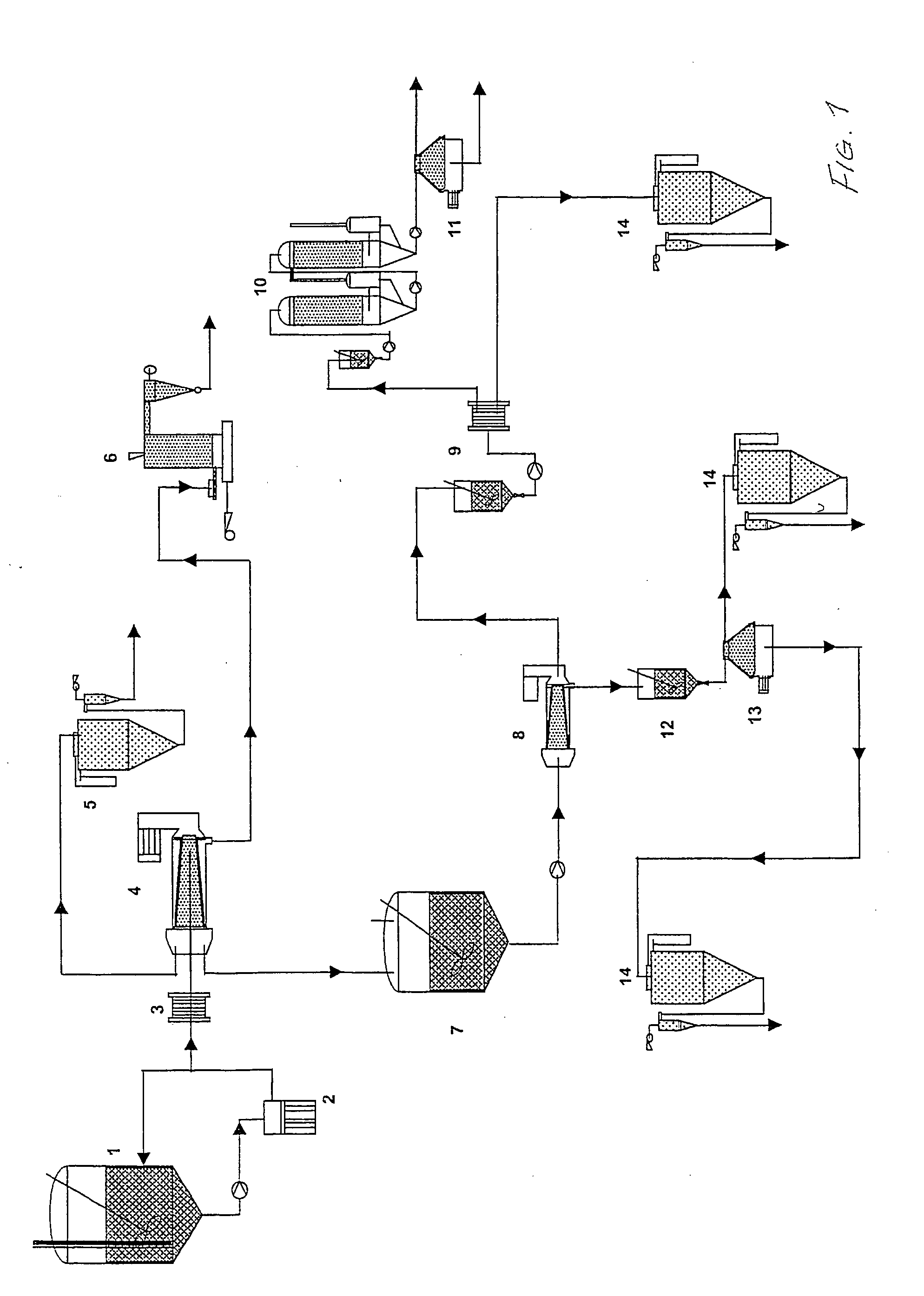Process for the fractionation of oilseed press cakes and meals
- Summary
- Abstract
- Description
- Claims
- Application Information
AI Technical Summary
Problems solved by technology
Method used
Image
Examples
example 1
[0027] Rapeseed cake obtained from press expeller process and containing 31% protein and 23.5% oil was subjected to an enzymatic hydrolysis with a multi enzyme complex containing beta glucanase, pentosanase, hemicellulase and pectinase activities in an amount of 1000 IU / g of substrate. The reaction mixture containing approximately 19% dry matter was continuously stirred and intermittently milled, at 1 hr intervals, through a wet mill to facilitate access of the enzymes into the substrate matrix and the dispersion of hydrolysis end-products. After 3 hrs of hydrolysis, the reaction mixtures was then heated up to 95° C. and centrifuged whilst hot in order to separate the solubles from the precipitate fraction, which consisted primarily of hulls. The solubles were re-suspended in water and centrifuged and five layers were identified and separated, i.e. two top layers of emulsified oil, one middle layer of solubles and two bottom layers of protein fibre-rich precipitates. The soluble mid...
example 2
[0029] Rapeseed cake was subjected to similar treatment conditions as described in Example 1, except that a multi enzyme complex containing twice higher hemicellulase activity was used. The extent of fibre hydrolysis was significantly higher (29%) than in Example 1. Equally, a higher protein extraction rate was achieved. The yields of fibre, emulsified oil and sugar-rich fractions were 29.5, 17.3 and 19.7%, respectively.
[0030] The results indicated that boosting fibre hydrolysis by altering specific enzyme activities improves the extraction rates of soluble components, i.e. proteins and oils.
example 3
[0031] A similar trial with rapeseed cake was carried out this time with enhanced enzymatic activity against hemicelluloses and highly branched pectins. A further improvement in the fibre hydrolysis with a yield of 23% was achieved. Protein and oil overall extraction rates of 83% and 86% were achieved, and considered to be significantly superior to those described by prior art on non-chemical fractionation processes.
PUM
| Property | Measurement | Unit |
|---|---|---|
| Fraction | aaaaa | aaaaa |
| Fraction | aaaaa | aaaaa |
| Fraction | aaaaa | aaaaa |
Abstract
Description
Claims
Application Information
 Login to View More
Login to View More - R&D
- Intellectual Property
- Life Sciences
- Materials
- Tech Scout
- Unparalleled Data Quality
- Higher Quality Content
- 60% Fewer Hallucinations
Browse by: Latest US Patents, China's latest patents, Technical Efficacy Thesaurus, Application Domain, Technology Topic, Popular Technical Reports.
© 2025 PatSnap. All rights reserved.Legal|Privacy policy|Modern Slavery Act Transparency Statement|Sitemap|About US| Contact US: help@patsnap.com

